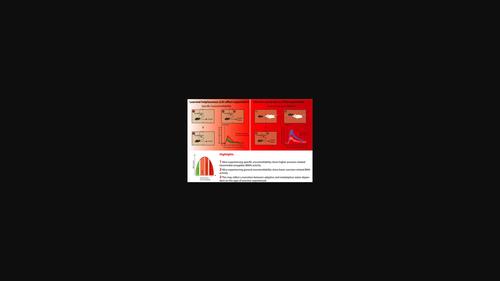当前位置:
X-MOL 学术
›
Eur. J. Neurosci.
›
论文详情
Our official English website, www.x-mol.net, welcomes your
feedback! (Note: you will need to create a separate account there.)
Basomedial amygdala activity in mice reflects specific and general aversion uncontrollability
European Journal of Neuroscience ( IF 2.7 ) Pub Date : 2020-12-18 , DOI: 10.1111/ejn.15090 Christian Ineichen 1 , Alexandra Greter 1 , Mischa Baer 1 , Hannes Sigrist 1 , Eva Sautter 2 , Yaroslav Sych 3 , Fritjof Helmchen 3, 4 , Christopher R. Pryce 1, 4
European Journal of Neuroscience ( IF 2.7 ) Pub Date : 2020-12-18 , DOI: 10.1111/ejn.15090 Christian Ineichen 1 , Alexandra Greter 1 , Mischa Baer 1 , Hannes Sigrist 1 , Eva Sautter 2 , Yaroslav Sych 3 , Fritjof Helmchen 3, 4 , Christopher R. Pryce 1, 4
Affiliation

|
Learning adaptive behaviour to control aversion is a major brain function. Detecting the absence of control is also important, although chronic uncontrollable aversion can impact maladaptively on stimulus processing in general. The mouse basomedial amygdala (BMA) contributes to aversion processing with high BMA activity associated with active behavioural responding. The overall aim of the present study was to investigate the associations between aversion (un)controllability, BMA activity and behaviour. Fibre photometry of GCaMP6-expressing BMA neuron populations was applied in freely behaving adult male mice during exposure to mild electrical shocks, and effects of specific or general (un)controllability were investigated. In a discrete learned helplessness (LH) effect paradigm, mice underwent discrete sessions of pre-exposure to either escapable shock (ES) or inescapable shock (IES) followed by an escape test. IES mice acquired fewer escape attempts than ES mice, and this co-occurred with higher aversion-related BMA activity in the IES group. After 30 days, ES and IES mice were allocated equally to either chronic social stress (CSS)—exposure to continuous uncontrollable social aversion—or control handling (CON), and on days 5 and 15 underwent an IES session. CSS mice made fewer escape attempts than CON mice, and this was now associated with lower aversion-related BMA activity in the CSS group. These findings suggest that mouse BMA activity is higher when discrete aversion is uncontrollable but becomes lower following chronic uncontrollable aversion exposure. Therefore, BMA activity could be a neural marker of adaptive and maladaptive states consequent to specific and general uncontrollability, respectively.
中文翻译:

小鼠基底内侧杏仁核活动反映了特定和一般厌恶的不可控性
学习适应行为以控制厌恶是一种主要的大脑功能。检测缺乏控制也很重要,尽管长期无法控制的厌恶通常会对刺激处理产生适应不良的影响。小鼠基底核杏仁核 (BMA) 有助于厌恶处理与积极的行为反应相关的高 BMA 活动。本研究的总体目的是调查厌恶(不)可控性、BMA 活动和行为之间的关联。将表达 GCaMP6 的 BMA 神经元群的纤维光度法应用于在暴露于轻度电击期间行为自由的成年雄性小鼠,并研究了特定或一般 (un) 可控性的影响。在离散的习得性无助(LH)效应范式中,小鼠经历了不连续的预暴露于可逃避电击(ES)或不可避免的电击(IES),然后进行逃生测试。IES 小鼠比 ES 小鼠获得更少的逃避尝试,这与 IES 组中更高的厌恶相关 BMA 活动同时发生。30 天后,ES 和 IES 小鼠被平均分配到慢性社会压力 (CSS) - 暴露于持续无法控制的社会厌恶 - 或控制处理 (CON),并在第 5 天和第 15 天接受 IES 会话。CSS 小鼠的逃跑尝试比 CON 小鼠少,这与 CSS 组中较低的厌恶相关 BMA 活动有关。这些发现表明,当离散厌恶不可控时,小鼠 BMA 活性较高,但在长期不可控厌恶暴露后变得较低。所以,
更新日期:2020-12-18
中文翻译:

小鼠基底内侧杏仁核活动反映了特定和一般厌恶的不可控性
学习适应行为以控制厌恶是一种主要的大脑功能。检测缺乏控制也很重要,尽管长期无法控制的厌恶通常会对刺激处理产生适应不良的影响。小鼠基底核杏仁核 (BMA) 有助于厌恶处理与积极的行为反应相关的高 BMA 活动。本研究的总体目的是调查厌恶(不)可控性、BMA 活动和行为之间的关联。将表达 GCaMP6 的 BMA 神经元群的纤维光度法应用于在暴露于轻度电击期间行为自由的成年雄性小鼠,并研究了特定或一般 (un) 可控性的影响。在离散的习得性无助(LH)效应范式中,小鼠经历了不连续的预暴露于可逃避电击(ES)或不可避免的电击(IES),然后进行逃生测试。IES 小鼠比 ES 小鼠获得更少的逃避尝试,这与 IES 组中更高的厌恶相关 BMA 活动同时发生。30 天后,ES 和 IES 小鼠被平均分配到慢性社会压力 (CSS) - 暴露于持续无法控制的社会厌恶 - 或控制处理 (CON),并在第 5 天和第 15 天接受 IES 会话。CSS 小鼠的逃跑尝试比 CON 小鼠少,这与 CSS 组中较低的厌恶相关 BMA 活动有关。这些发现表明,当离散厌恶不可控时,小鼠 BMA 活性较高,但在长期不可控厌恶暴露后变得较低。所以,











































 京公网安备 11010802027423号
京公网安备 11010802027423号